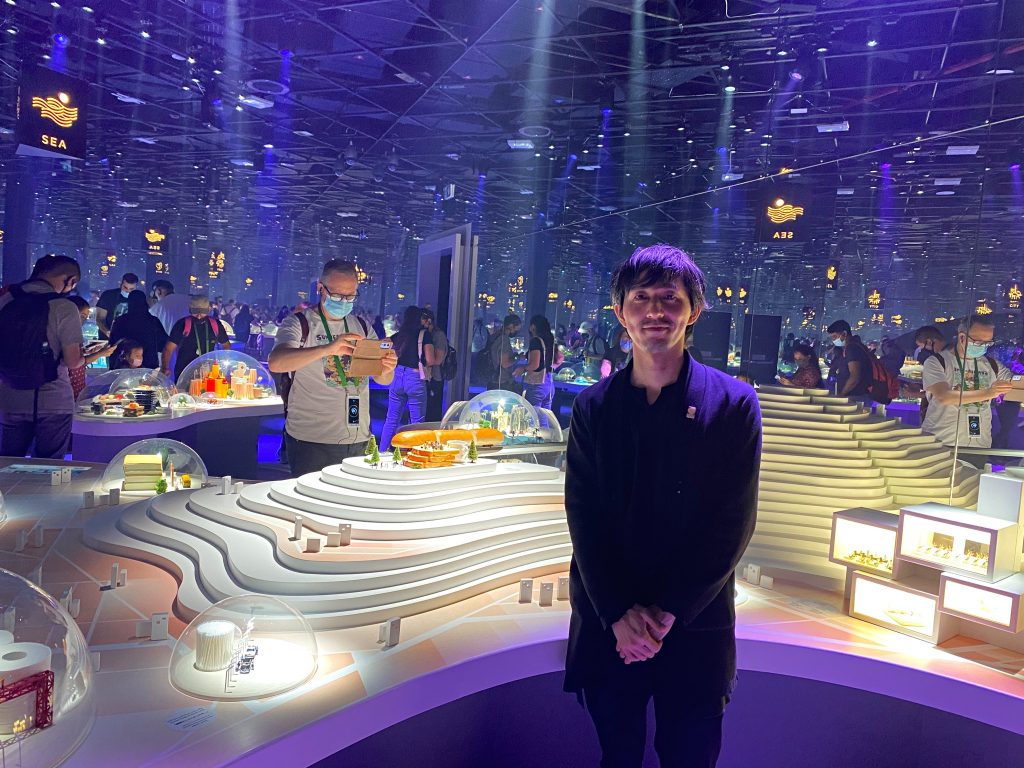
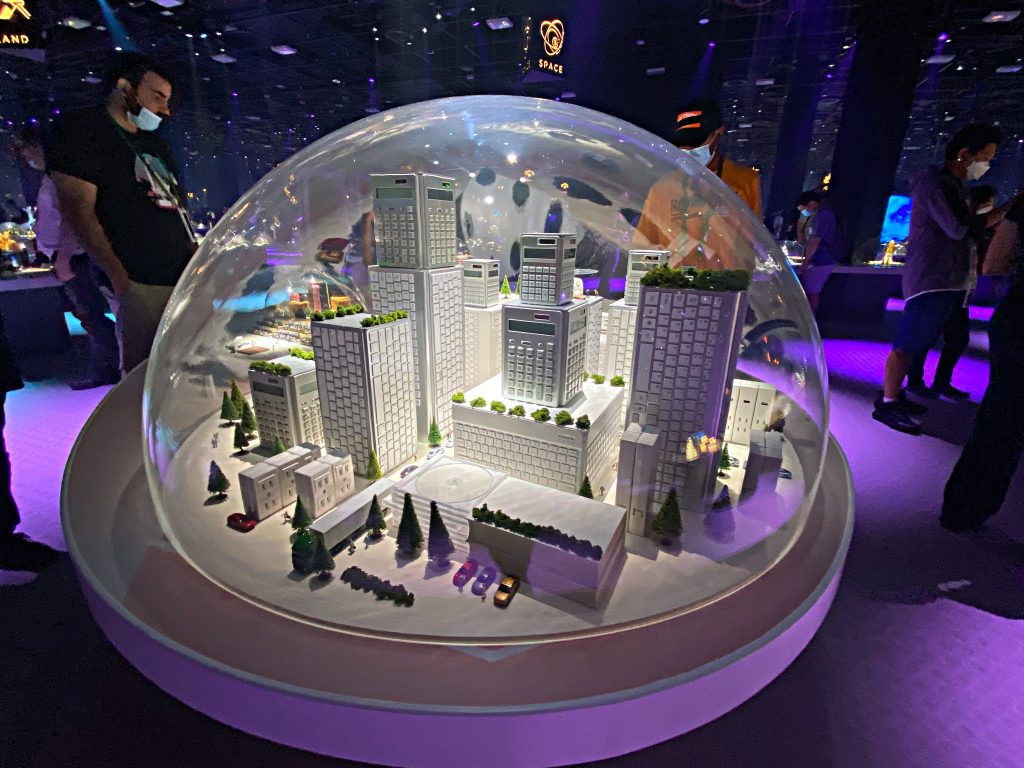
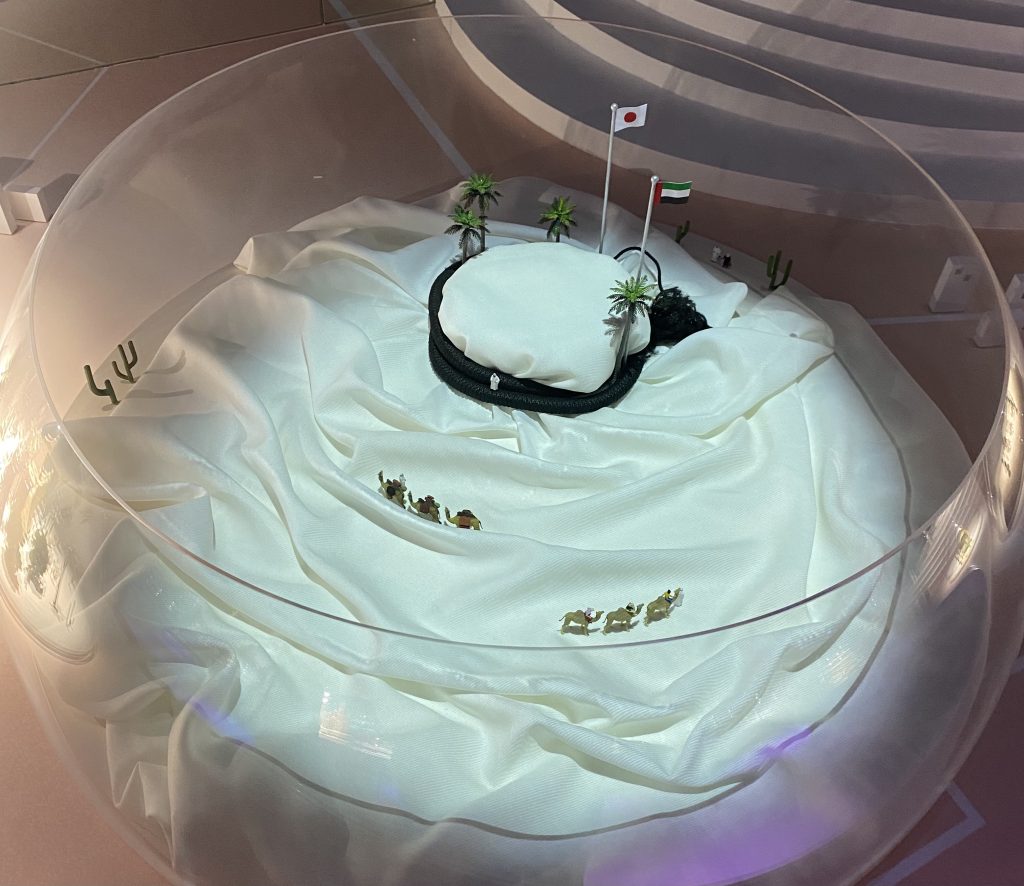
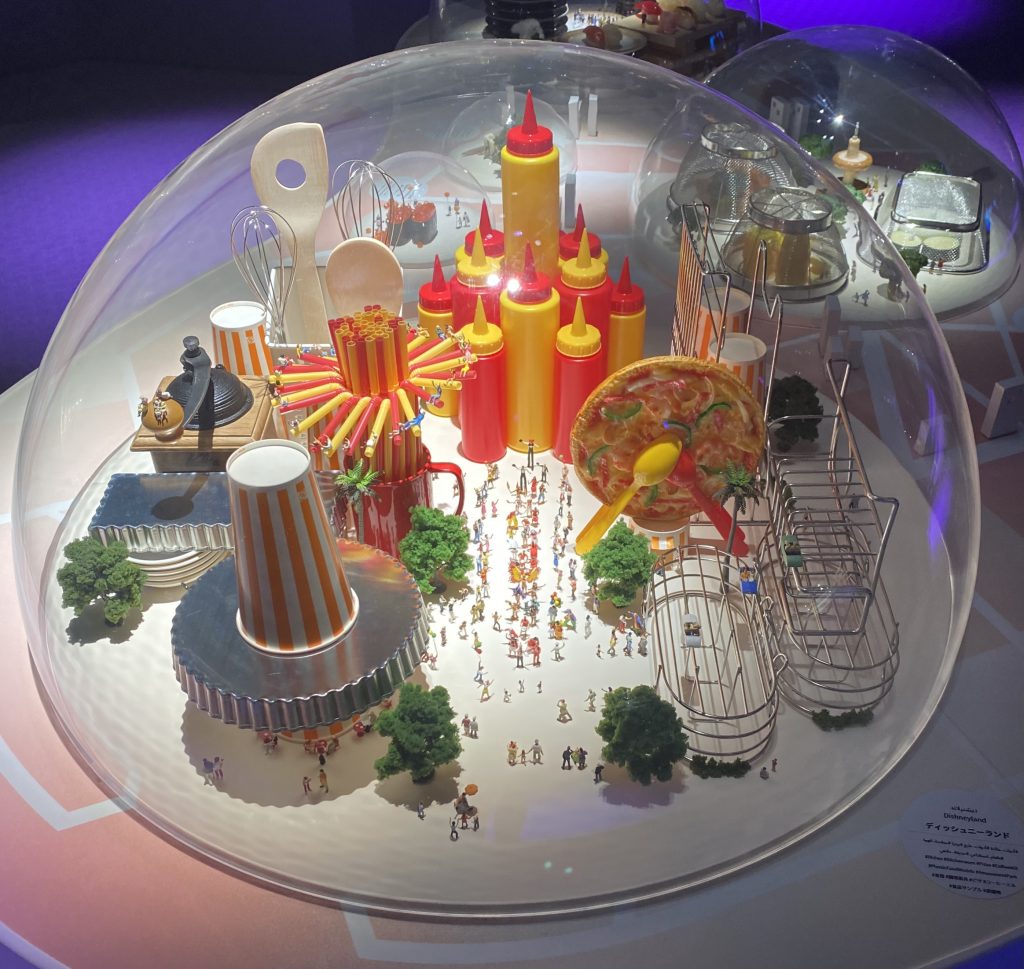
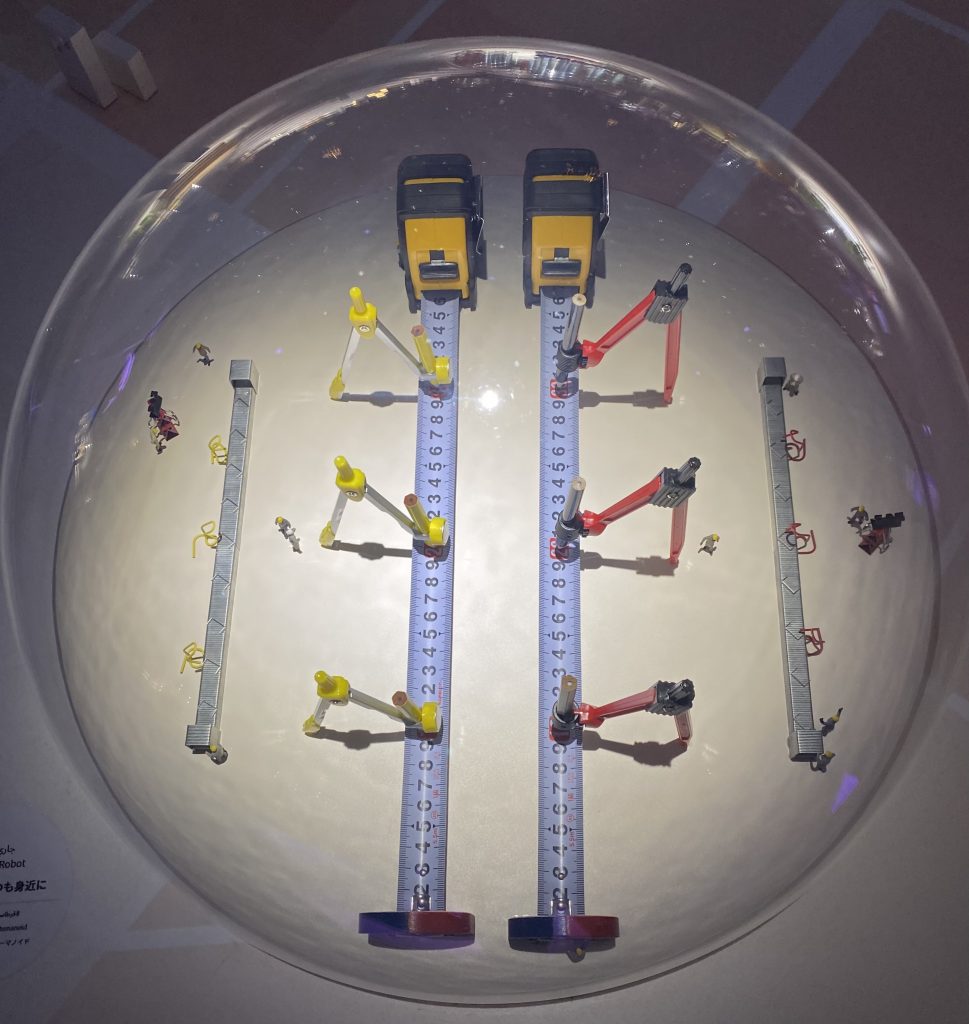
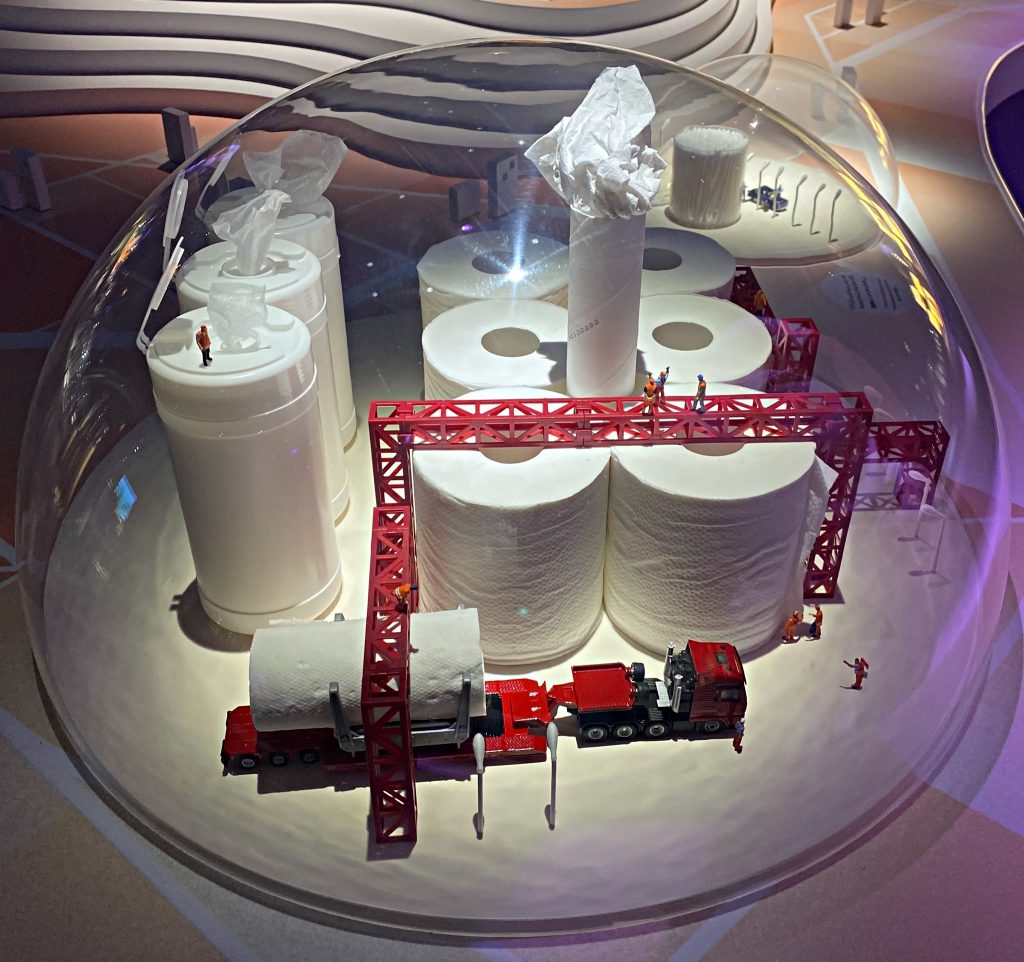
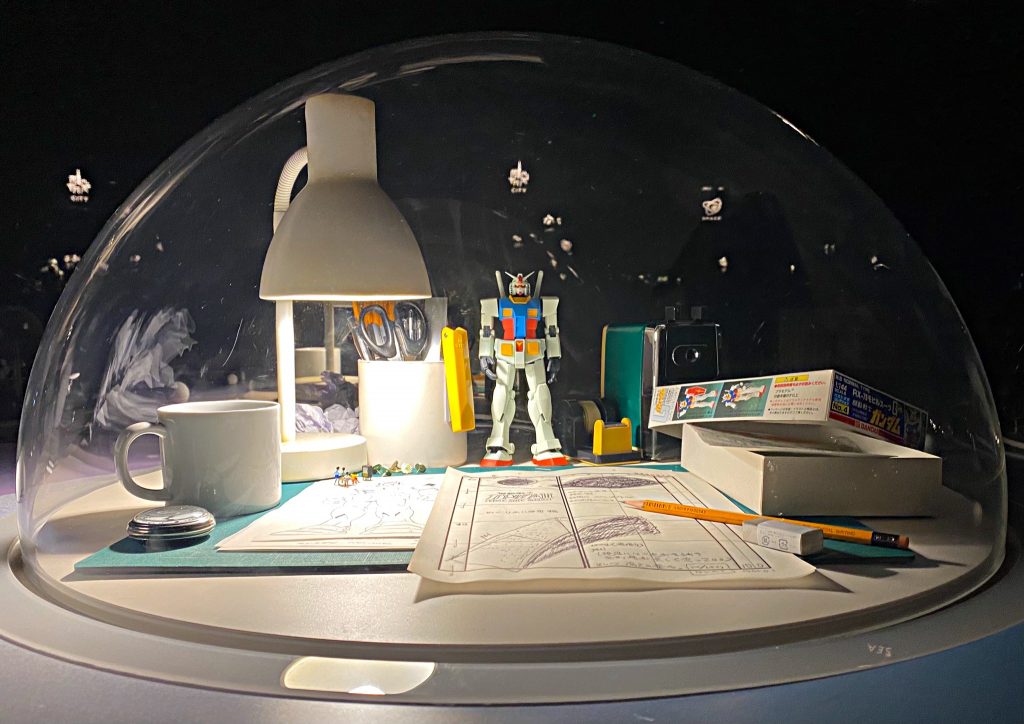
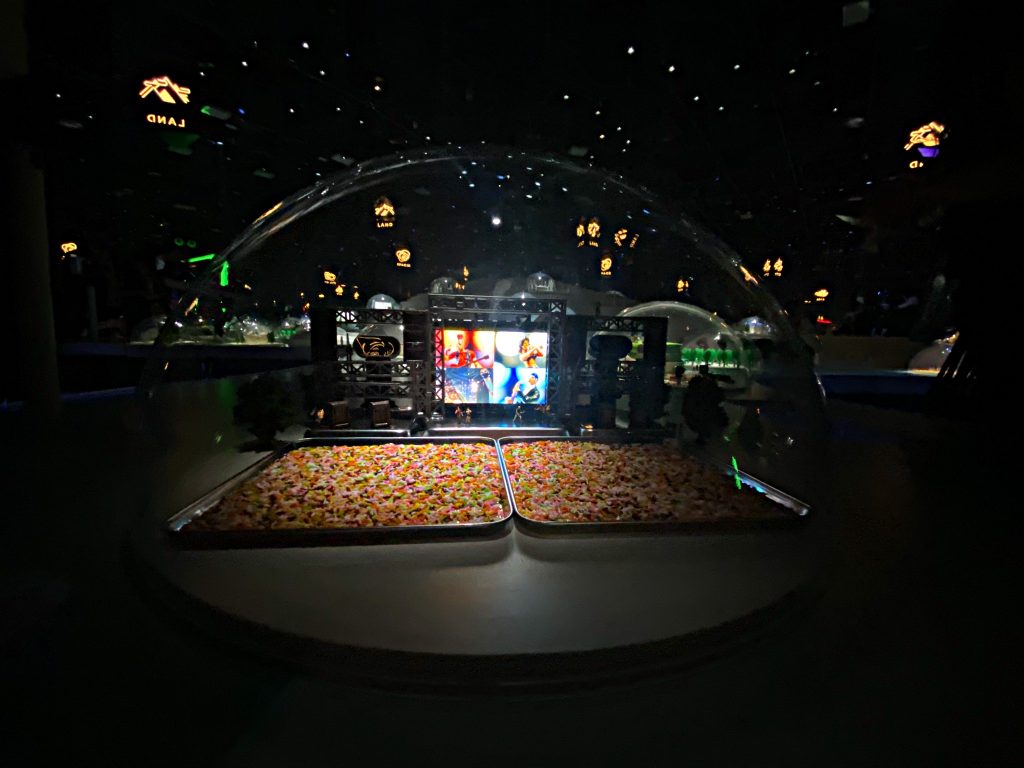








Carla Chahrour
DUBAI: By experimenting with materials, techniques and scale, Japanese artist Tanaka Tatsuya, the creative force behind the innovation room at the Japan Pavilion at Dubai Expo 2020 has dedicated his practice to showcase everyday objects in a new light.
Upon entering the gallery space, visitors are inevitably filled with a sense of anticipation by encountering hundreds of glass domes categorized into four themes — “Space,” “City,” “Sea” and “Land,” while mirrors concurrently reflected their movement.
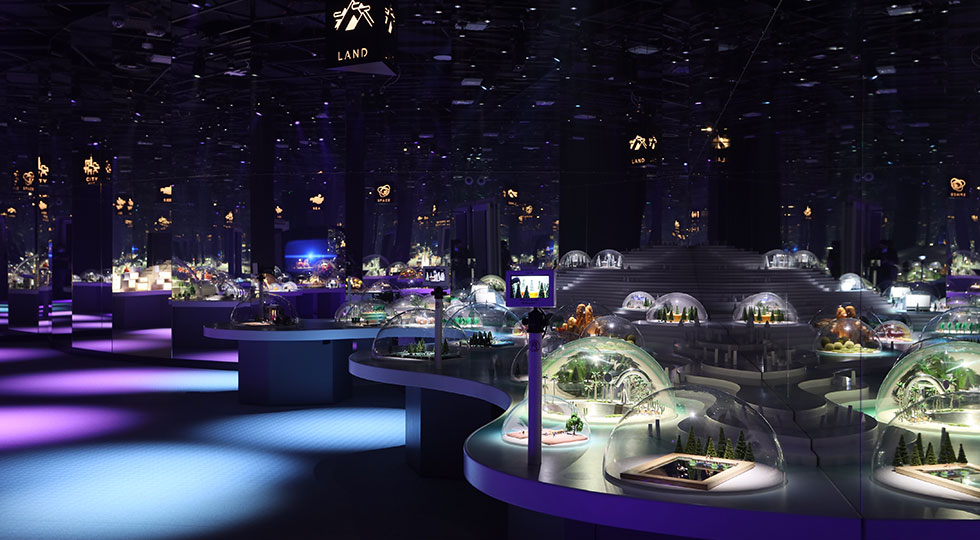
Immediately, visitors are informed that the exhibition requires a different type of intellectual engagement. The presentation includes an array of 128 glass domes filled with miniature artworks made using ordinary objects. These objects have been recreated by Tatsuya to showcase solutions to global issues while simultaneously triggering memories, and a sense of nostalgia, as well as humor.
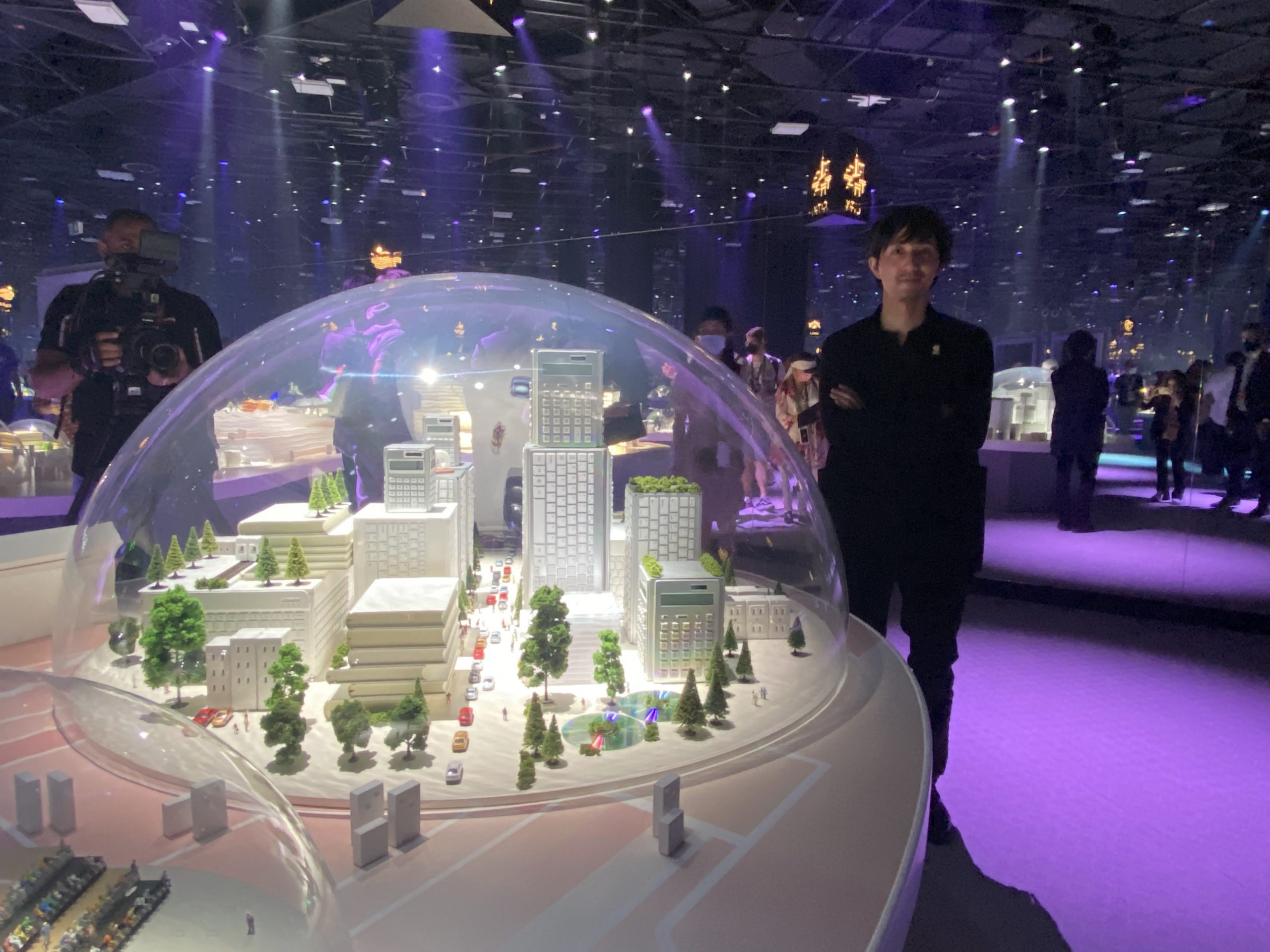 Japanese Artist Tanaka Tatsuya standing near a miniature installation of a city at Expo 2020 Dubai’s Japan Pavilion. (ANJP Photo)
Japanese Artist Tanaka Tatsuya standing near a miniature installation of a city at Expo 2020 Dubai’s Japan Pavilion. (ANJP Photo)Imagine miniature, 2 cm figurines walking around a city with buildings made of stacked calculators and keyboards, factories made of toilet paper, melting glaciers made of glass plates, tsunami warning systems made of blue and white dominoes, or trains made of baguettes. Although familiar, the artwork has been meticulously manipulated into intricate scenes that portray technological advancements relative to the respective themes, in a way that makes the things used to help people live their lives appear mysteriously surreal.
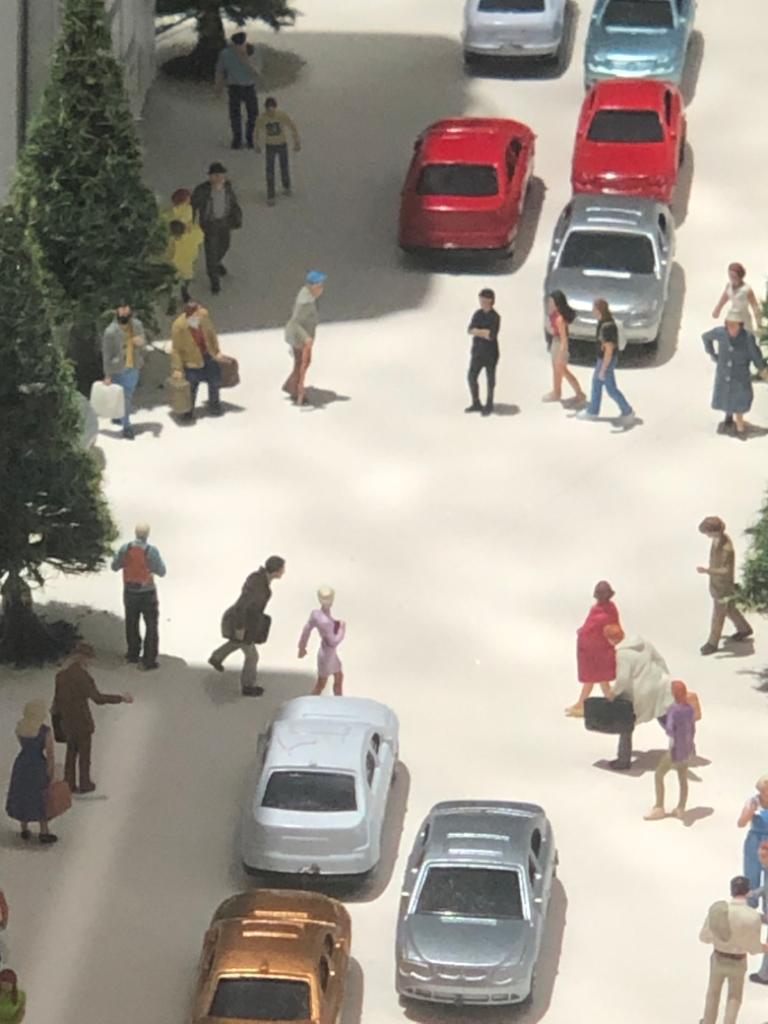
In an exclusive interview with Arab News Japan, Tatsuya, who is a versatile art director and designer, explains the creation process and narrative of the exhibition by revealing the inspiration behind the artwork showcased at the Japan Pavilion and the relationship between the themes. In doing so, Tatsuya describes the Japanese art form mitate, and draws attention to the power of simple objects.
Tatsuya is primarily known as the first “miniature” photographer for his work, entitled “Miniature Calendar,” a series of photographs of his collection of diorama dolls, which depict scenes of everyday objects in broadly inconsistent settings. The art, which has been presented for 10 years, has attracted attention not only from within Japan but also from abroad.
In Japanese art, mitate is often described as the perception of an object in a form that is different than the one that was initially intended for it. The art involves forms of visual puns, wherein one must decode the pun in the art work through an associative strategy.
 An installation depicting the effects of global warming made from glass plates and penguin models. (ANJP Photo)
An installation depicting the effects of global warming made from glass plates and penguin models. (ANJP Photo)“My artwork is all made using the Japanese style of art mitate. To do this, I had to use objects that people are familiar with and look at it from a different perspective. This required me to create miniatures where viewers from different backgrounds could be able to understand, and transform the scene into something else,” Tatsuya said.
He initially began to use everyday objects as inspiration in 2011, transforming them into works of art through the use of different mediums. During the process of developing his work, he struggled to find objects or models that were suitable, and then started to use his collection of miniature humans, that included commercially available architectural models, diorama dolls, and personally sculptured models made from scratch or with a 3D printer, which was when he started posting his creations on Instagram. The art, which has now been presented for 10 years, has attracted attention not only from within Japan but also from abroad, as seen from his having over 3 million followers.
“The concept of mitate was central to my work, and it all started when I was looking at my broccoli at dinner and got the idea that broccoli looks like a tree, so why not create a forest? So my world of miniature art grew through mitate,” the artist said, who studied art at university before becoming artistic director of a graphic design studio.
Before he started incorporating mitate into his professional work, Tatsuya said that the concept stemmed from when he was a child. Growing up with many siblings, the number of toys available to each was limited and prompted Tatsuya to start playing with everyday objects that he could find around him, such as tissue boxes.
While his childhood has passed, he remembers this activity as something that he has always done, with the only difference being that what he creates today is done on a professional level, challenging the metaphysical perception of objects and changing the point of view through which they are discerned.
 An installation depicting a tsunami warning system with multicolored dominos. (ANJP Photo)
An installation depicting a tsunami warning system with multicolored dominos. (ANJP Photo)The overarching theme of the installation in Tatsuya’s collection is that of “today’s solutions” spread across the four categories. This was purposely done in order for the work presented to be aligned with the theme of the Japan Pavilion, “Where ideas meet,” that demonstrates how diverse encounters can create new ideas and lead us to join toward a better future.
“In the process of developing the installation, I requested information from the producer of the Japan Pavilion about the current technology that will be touched upon. After gathering all the information, and classifying it into one of the four categories, I sourced all of the materials, which were pre-packaged into 25 carton cases from Japan. All 128 pieces were then personally and individually reassembled in the UAE,” Tatsuya said.
The placement of the miniature sculptures into glass domes was done for two reasons, according to Tatsuya. The first was to reinforce the recurrent theme present throughout the pavilion, which is the circle of the Japanese flag. The second reason was to provide visitors with the freedom to explore and appreciate the work from any angle.
“If I was to display the work in a square shaped box, then there would be particular angles where the visitors would have to look from. Whereas the domes allow the visitors to look at the work from 360 degrees. The dome also eliminates shadows interfering with the work,” Tatsuya said.
Elaborating on his theme of “today’s solutions” and the relationship between that and technological innovation in Japan, Tatsuya pointed out to the installation depicting the target marker of Hayabusa, the robotic spacecraft developed by the Japan Aerospace Exploration Agency, which he presented with beanbags. The idea to use this object in representation of the asteroids around the spacecraft was due to the fact that the technology that allows the target marker to land on an asteroid was inspired by the method in which a traditional Japanese toy, a beanbag, or “otedama,” works.
“After hearing about the technology involved in the construction of Hayabusas, I learnt that the idea behind this fundamental technology was inspired by a beanbag. I started to ponder about how such a primitive or basic idea could aid in the development of such high technology. Mitate is not used to merely present visual transformations of objects, but also as a way to find solutions. Solutions are the key of exploration. To look for solutions, one doesn’t only have to consider complex concepts from high-end technology but also in the world around them, in the things already present around them or in simple traditions,” Tatsuya said.
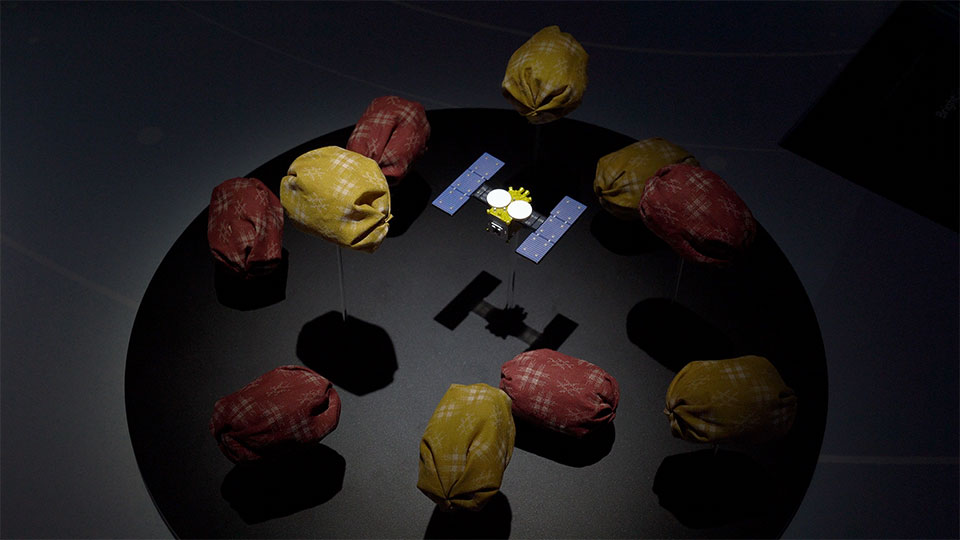
Though artists today have a world of technology at their fingertips, the Japan Pavilion’s decision to present the creations of Tatsuya, who chooses to work in a more traditional manner and incorporate everyday objects to make intricate artworks, allows visitors from diverse backgrounds to challenge their preconditioned notions of broad concepts through the portrayal of how solutions to current issues can be yielded from examining prior systems from novel perspectives.